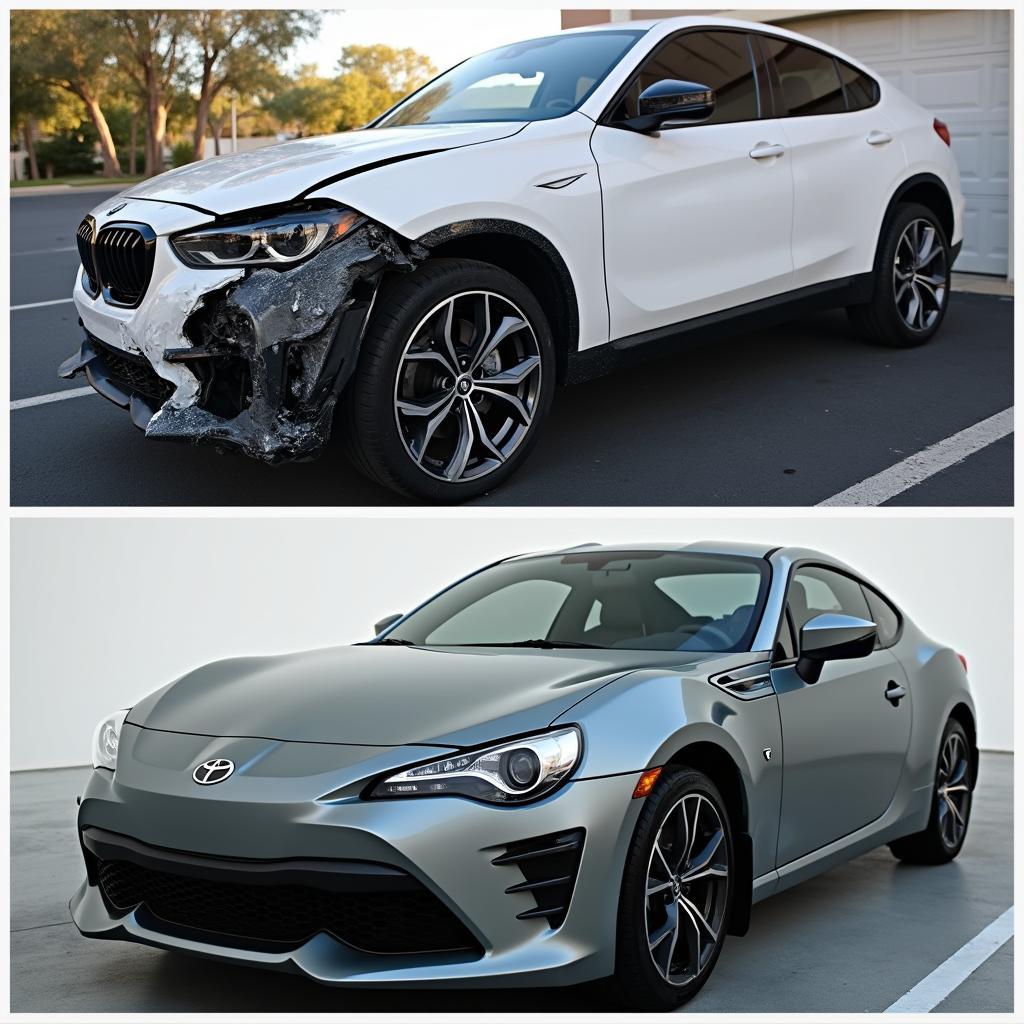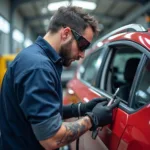Car bodywork repair encompasses a wide range of services designed to restore your vehicle’s exterior to its former glory. Whether it’s a minor scratch from a parking lot mishap or significant damage from a collision, expert car bodywork repair technicians possess the skills and knowledge to erase the evidence and leave your car looking as good as new.
From minor cosmetic fixes to major collision repairs, understanding the different types of car bodywork repairs can help you make informed decisions when it comes to your vehicle’s restoration. Let’s delve into the intricacies of car bodywork repair, exploring common types of damage, the repair process, and factors influencing costs.
Understanding Common Car Bodywork Repairs
A multitude of incidents can necessitate car bodywork repair. Some of the most frequent culprits include:
- Dents: Dents, those unsightly depressions in your car’s bodywork, can result from minor fender benders, runaway shopping carts, or even hailstorms.
- Scratches: Scratches, ranging from superficial clear coat blemishes to deep gouges exposing the metal beneath, often stem from minor collisions, vandalism, or even accidental brushes with abrasive surfaces.
- Cracks: Similar to dents, cracks can be caused by impacts. However, they can also appear due to stress fractures caused by vehicle flexing or extreme temperature changes.
- Rust: Rust, a common sight on older vehicles or those exposed to harsh weather conditions, occurs when iron in the car’s metal oxidizes, leading to unsightly discoloration and weakening of the bodywork.
The Car Bodywork Repair Process: A Step-by-Step Guide
While the specific steps involved in car bodywork repair might vary depending on the severity of the damage, the general process typically involves:
- Damage Assessment: A thorough inspection is conducted to identify all areas requiring repair. This step is crucial in providing an accurate cost estimate and repair timeline.
- Repair or Replace: Minor damage like dents and scratches might only require repair, while more extensive damage might necessitate part replacement.
- Surface Preparation: The damaged area is sanded down to bare metal, creating a smooth surface for filler application and ensuring optimal paint adhesion.
- Body Filler Application: Body filler, a compound used to fill in dents and imperfections, is applied meticulously to achieve a seamless, even surface.
- Sanding and Priming: Once the filler dries, it’s sanded down to match the car’s original contours, followed by the application of a primer to create a smooth base for paint.
- Painting: Matching the new paint to your car’s existing finish is crucial. Skilled technicians use computerized paint mixing systems to achieve a perfect color match.
- Clear Coat Application: A protective clear coat is applied to seal in the paint, providing a glossy finish and protecting it from UV damage and environmental elements.
- Polishing and Detailing: The final step involves meticulous polishing to achieve a showroom-worthy shine.
What Factors Influence Car Bodywork Repair Costs?
Several factors influence the overall cost of your car bodywork repair:
- Extent of Damage: This is a no-brainer. Minor scratches will cost significantly less to repair than extensive collision damage.
- Type of Repair: Dent removal is typically less expensive than panel replacement.
- Car Make and Model: Luxury or rare car parts can be more expensive to source, impacting the overall repair cost.
- Labor Rates: Repair shops in different locations or with varying levels of expertise might charge different labor rates.
DIY vs. Professional Car Bodywork Repair:
While minor scratches or dents might seem like easy DIY fixes, it’s essential to understand that professional car bodywork repair offers several advantages:
Expertise: Car bodywork repair technicians undergo specialized training, possessing the skills and knowledge to execute repairs flawlessly.
Specialized Tools and Equipment: Professional repair shops are equipped with specialized tools and equipment that are essential for achieving high-quality results.
Color Matching: Achieving a perfect paint match is crucial for a seamless repair. Professional shops use computerized systems to ensure an exact match.
For significant damage or if you’re unsure about your DIY skills, seeking professional car bodywork repair is always the recommended course of action.
Finding Reputable Car Bodywork Repair Services
When it comes to entrusting your vehicle to a car bodywork repair shop, finding a reputable and reliable service provider is paramount. Here are a few tips:
- Seek Recommendations: Ask friends, family, or your trusted mechanic for recommendations.
- Check Online Reviews: Websites and online platforms provide valuable insights into the experiences of previous customers.
- Look for Certifications: Certifications indicate that the shop meets specific industry standards and employs qualified technicians.
- Inquire about Warranties: Reputable shops stand behind their work, offering warranties on repairs.
If you’re looking for reliable and professional car bodywork repair services in specific locations across the UK, consider these options:
- Newcastle upon Tyne: car bodywork repair newcastle upon tyne
- Cwmbran: car bodywork repairs cwmbran
- Dorchester: car bodywork repairs dorchester
Car Bodywork Repair: Keeping Your Car Looking Its Best
Car bodywork repair is an essential aspect of vehicle maintenance, ensuring your car maintains its aesthetic appeal, structural integrity, and value. By understanding the different types of repairs, the process involved, and factors influencing costs, you can make informed decisions when it’s time to restore your vehicle to its former glory.
Remember, always prioritize safety and seek professional help when dealing with significant car bodywork damage.



